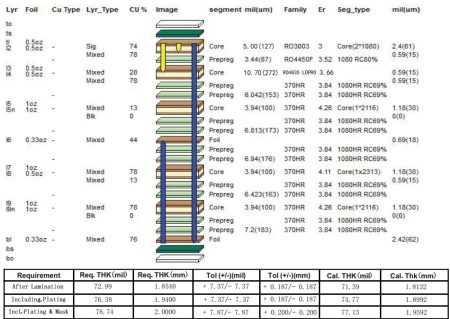- +86-755-23012705
- Building 3, Jinfeng Industrial Park, Fuyong Street, Baoan District, Shenzhen ,China
- [email protected]
Menu
With the rapid progress of the electronics industry, the application of high-frequency circuit boards has become a reality that does not have to be changed in the fields of air transportation and satellite systems.
So what are the basic requirements for the material properties of high-frequency circuit board production factories when choosing PCB substrates?
(1) Dielectric constant: Dk needs to be small and stable, under normal circumstances, the smaller the Dk, the faster the signal transmission speed, which is inversely proportional to the square root of the dielectric constant of the substrate, and the larger the Dk, the easier it is to cause signal transmission delay.
(2) Dielectric loss: At the same time, the smaller the Dk, the better the signal transmission quality, the smaller the dielectric loss, and the smaller the signal loss.
(3) The thermal expansion coefficient of copper foil should be as consistent as possible, the water absorption should be low, and other heat resistance, chemical resistance, impact strength, peel strength, and other aspects must be well protected.
Normally, the definition of high-frequency board is above 1GHz, most of the high-frequency circuit board substrates currently produced are fluorine-based dielectric substrates, such as Teflon, most of which are used above 5GHz, and other FR4 substrates are used between 1GHz ~ 10GHz. Frequency characteristics Teflon are the best choice, if the product frequency is really higher than 10GHz, only Teflon can meet, of course, not all PCB high-frequency boards must choose Teflon materials, the specific situation depends on the customer’s demand for products to decide.

There are five specific characteristics of high-frequency circuit boards:
(1) Income: High-frequency circuits and low-frequency power supply circuits are voltage gain and output power harvesting effect, resonant differential amplification circuit, it refers to the resonant frequency f0, for optical fiber broadband differential amplification circuit, it refers to a frequency area.
(2) Passband: The concept of low-frequency power supply circuit board is good, for the resonant differential amplifier circuit, most of them refer to the value between the two corresponding frequencies when the normalized vibration amplitude drops to 0.707 for the resonant frequency f0; for the optical fiber broadband amplification circuit, it refers to the corresponding meaning relative to a certain frequency.
(3) Selectivity: Selectivity is mainly for resonant amplification circuits, which characterize the circuit’s selection of useful signals and the suppression ability of useless signals, which is usually measured according to the resonance characteristic curve of the circuit, with rectangular coefficient and suppression ratio.
(4) Noise figure: When the amplification circuit is working, due to some factors, the fluctuations will move irregularly, and the noise formed inside the circuit will affect the quality of the signal. This effect is usually described as the ratio of signal power PS to noise power PN (SNR). The noise factor is the contrast between the input signal noise and the output signal noise.
(5) Stability: The stability of high-frequency circuit board refers to the stability of its main performance when the working state or working conditions change. When the temperature of the environment changes or the voltage of the power supply fluctuates, it will affect the normal state of the DC operation of the amplified circuit, and the parameters of the circuit components will also change, which will lead to the change of the gain of the amplification circuit, the frequency shift of the center, and the sudden change of the resonance curve. In the end, it can lead to not working at all.
Take Your Projects to New Heights with XPCB LimitedXPCB Limited offers top-notch PCB manufacturing, quick-turnaround prototyping, and turnkey PCBA services designed to make your projects shine. Count on us to bring your ideas to life with efficiency and quality. Your success matters to us, and we’re here to make your innovation journey smooth and rewarding.






XPCB Limited is a premium PCB & PCBA manufacturer based in China.
We specialize in multilayer flexible circuits, rigid-flex PCB, HDI PCB, and Rogers PCB.
Quick-turn PCB prototyping is our specialty. Demanding project is our advantage.
Tel : +86-136-3163-3671
Fax : +86-755-2301 2705
Email : [email protected]
© 2023 - XPCB Limited All Right Reserve
